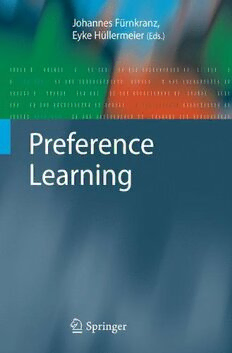
Preference Learning PDF
476 Pages·2011·7.439 MB·English
Most books are stored in the elastic cloud where traffic is expensive. For this reason, we have a limit on daily download.
Preview Preference Learning
Description:
The topic of preferences is a new branch of machine learning and data mining, and it has attracted considerable attention in artificial intelligence research in recent years. Representing and processing knowledge in terms of preferences is appealing as it allows one to specify desires in a declarative way, to combine qualitative and quantitative modes of reasoning, and to deal with inconsistencies and exceptions in a flexible manner. Preference learning is concerned with the acquisition of preference models from data – it involves learning from observations that reveal information about the preferences of an individual or a class of individuals, and building models that generalize beyond such training data. This is the first book dedicated to this topic, and the treatment is comprehensive. The editors first offer a thorough introduction, including a systematic categorization according to learning task and learning technique, along with a unified notation. The remainder of the book is organized into parts that follow the developed framework, complementing survey articles with in-depth treatises of current research topics in this area. The book will be of interest to researchers and practitioners in artificial intelligence, in particular machine learning and data mining, and in fields such as multicriteria decision-making and operations research.
See more
The list of books you might like
Most books are stored in the elastic cloud where traffic is expensive. For this reason, we have a limit on daily download.
